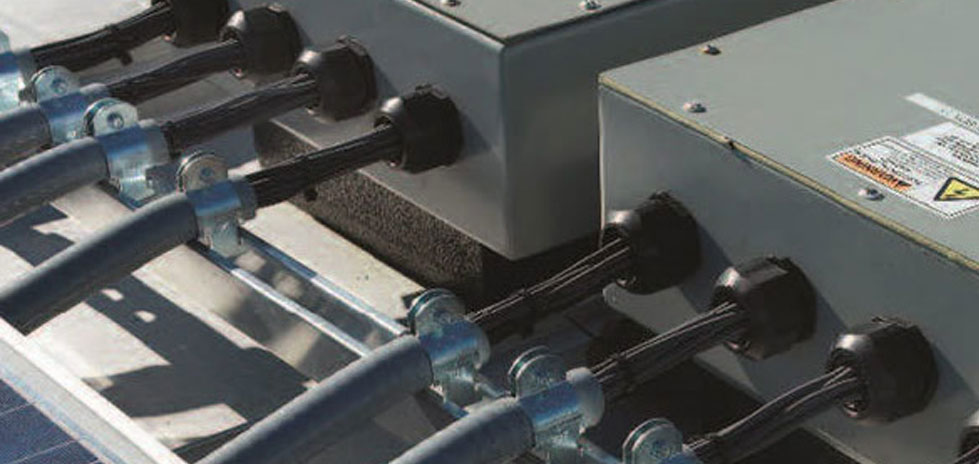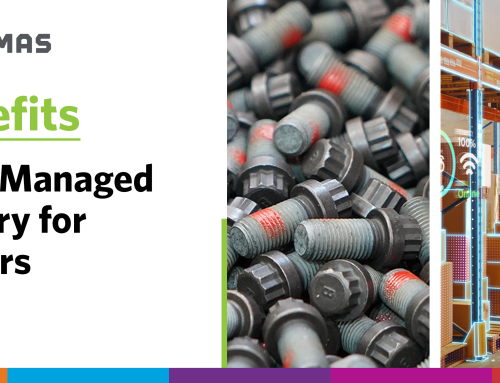
5 Reasons Mfgs Use Inventory Management Programs
Here’s a look at five reasons why Vendor Managed Inventory (VMI) is a growing practice to streamline your supply chain, reduce costs, increase part consumption visibility and redeploy labor for more important activities.
Vendor Managed Inventory (VMI) or inventory management, has been around since the 1980s when companies such as Walmart used it to revolutionize their supply chains. In the thirty years since then, inventory management has evolved to become more accessible for companies of all sizes. New technologies like artificial intelligence (AI) and the Internet of Things (IoT) now allow organizations to optimize their VMI programs and help them to continue to innovate and improve supply chain management.
What is VMI?
In simplest terms, VMI is letting someone else (a vendor) manage your inventory. The vendor is solely responsible for making sure that the right items, go to the right places, at the right time.
But VMI is bigger in scope and benefits than just ‘managing parts.’ It’s about streamlining your supply chain, reducing costs, having higher visibility into your part consumption, and reallocating human resources away from slow, manual, error-prone work to more quality-focused, value-add responsibilities.
What’s Accelerating VMI?
Supplier reduction initiatives and emerging technologies continue to accelerate the adoption of VMI.
The purpose of supplier reduction, also known as vendor consolidation, is to reduce the number of suppliers within a specific supply market in order to save money.
Paul Przyby, Vice President of Sales & General Manager at Optimas Solutions, has observed the evolution of supply chain management up close for the past several decades. He sees more companies optimizing their existing VMI programs as part of their supplier reduction efforts: “Taking just ten suppliers out of your system can make a huge impact. That’s why working with us – one supplier who can manage from procurement to replenishment – makes their lives much easier.”
Or consider the costs of adding new suppliers into your supply chain. Some experts suggest that the cost to add in just ten extra suppliers every five years is $1 million plus.
The parts themselves make up only 15% of those costs, while the human resources required to select, manage and process those suppliers take up the other 85%. Whether you’re trying to actively reduce suppliers, or are trying to control the number of suppliers added to your supply chain over time, VMI can help. For more on this, read our Supplier Consolidation Case Study
Here’s a look at five reasons why VMI is a growing practice and why more small to medium-sized manufacturers are implementing this model.
-
- Technology Streamlines Processes – Vendor Managed Inventory systems leverage various technologies to automate simple and complex processes throughout your supply chain. This allows you to remove steps and internal people from your processes thus creating efficiencies in how each part is ordered, delivered, stored and replenished.
- Improved Data Visibility – The entire supply chain workflow gets more efficient with VMI solutions –from the plant floor to the top of the supply chain. When all departments have better visibility into your inventory levels and consumption they can make better data-driven decisions and avoid stock-outs or shortages.
- Reduced Costs – Better inventory management allows you to lower on-hand inventory. This leads to less waste and obsolescence and fewer people needed to manage your inventory. On the ordering side, being able to place a single PO with a single VMI partner allows you to reduce your hidden soft costs that add up over many parts and many orders. A VMI partner can often take advantage of their leveraged purchasing power because of the sheer volume of ordering they do.
- Improved Workflow and Productivity – Inventory management alone cannot promise increased productivity for your organization, but the improved workflow it provides can certainly help. A good VMI partner will assess your current workflow from receiving to routing to replenishment and find ways to remove steps, saving time and money
- Valued Partnership – VMI is a true partnership in which both entities are focused on efficiency and profitability. VMI partners can offer you more supplier diversity, guarantee on-time delivery where and when you need them, and look for ways to continuously enhance your operations for cost savings and quality improvements.
Finding A Trusted VMI Partner
The promises of inventory management are many: lower costs, fewer stockouts, less waste, higher inventory turnover and better forecasting. Today’s supply chain solutions coupled with the right VMI partner can make those promises a reality.
Przyby explains: “It’s important to remember that no two supply chains are alike. A VMI partner needs to spend the time getting to know your organization so they can develop the right customized VMI program for you.”
Considering VMI for your organization? Get in touch with one of our VMI Experts.







